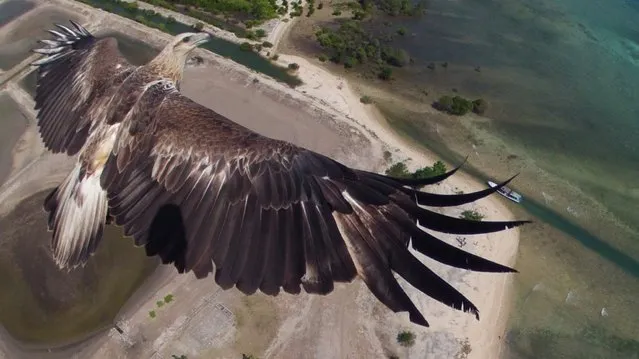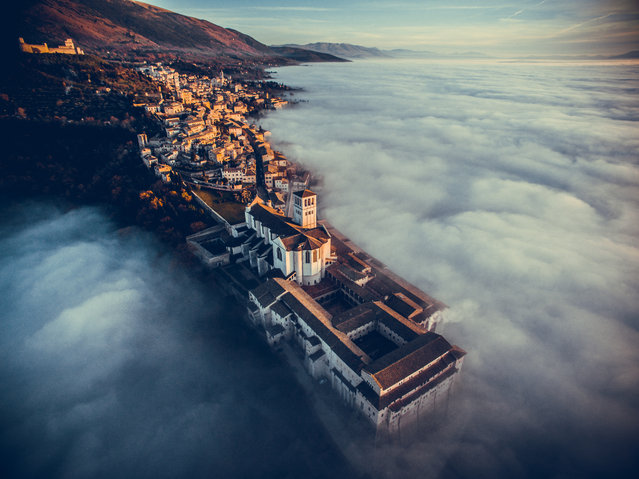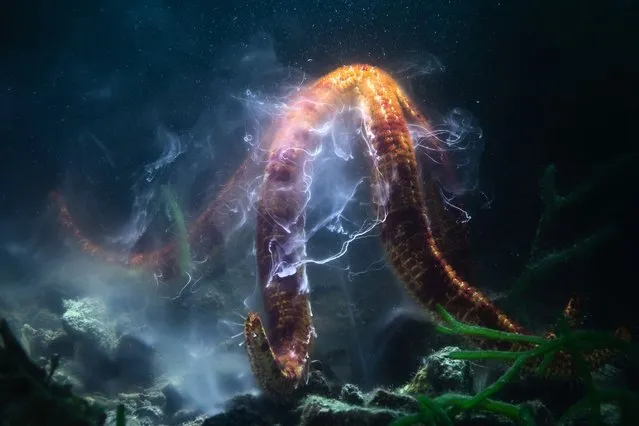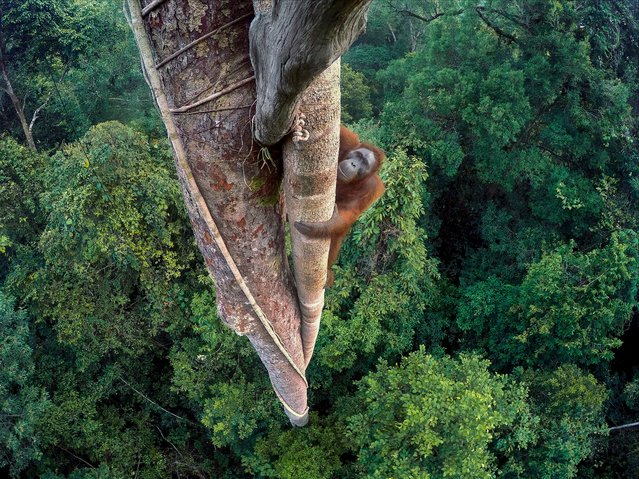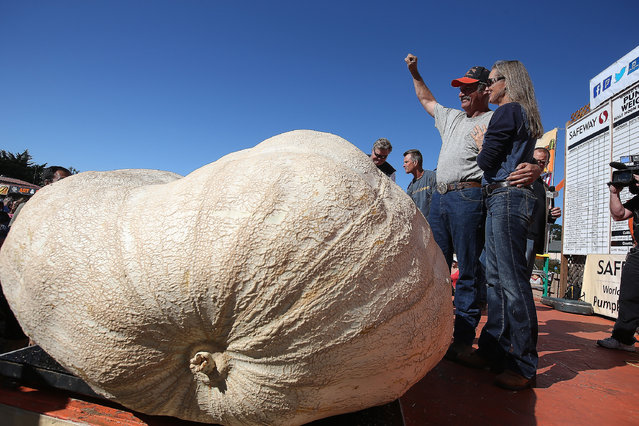
John Hawkley and his wife Patty Hawkley stand next to their 2,058 pound pumpkin and celebrate after winning the 41st Annual Safeway World Championship Pumpkin Weigh-Off on October 13, 2014 in Half Moon Bay, California. John Hawkley of Napa, California won the 41st Annual Safeway World Championship Pumpkin Weigh-Off and broke a state record with his gigantic pumpkin weighing in at 2,085 pounds. Hawkley took home a cash prize of $12,510, or $6.00 a pound. (Photo by Justin Sullivan/Getty Images)
15 Oct 2014 12:27:00,post received
0 comments

